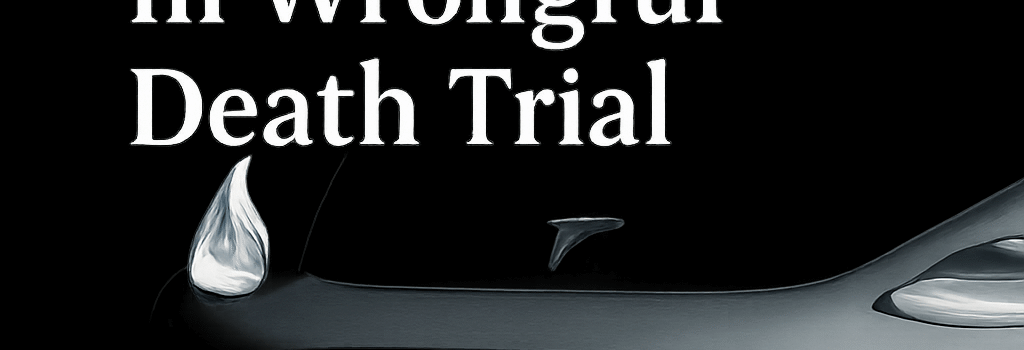Critique of Tesla Autopilot Safety in Wrongful Death Trial

Case Background and Crash Details
In July 2025, jury selection began in the Wilkie D. Ferguson Jr. U.S. Courthouse in Miami for a federal wrongful death lawsuit against Tesla. The suit centers on a fatal April 2019 collision in Key Largo, Florida, where a Hardware 3–equipped Tesla on Autopilot failed to stop at a posted stop sign, striking 22-year-old Naibel Benavides Leon and injuring her partner, Dillon Angulo. Benavides died at the scene; Angulo sustained traumatic brain injury.
Expert Testimony Highlights
Autonomous System Design Flaws
Missy Cummings, former NHTSA senior advisor and autonomous systems researcher, described Tesla’s driver assistance as defective by design. She noted:
“Tesla knowingly allows Autopilot to operate in domains—for example, unstructured intersections—for which its vision-only system is not designed.”
Cummings detailed the car’s reliance on eight cameras, 12 ultrasonic sensors, and a forward radar, integrated by Tesla’s in-house FSD computer (approx. 2 petaflops of INT8 performance). She argued that without lidar or high-definition mapping, scene understanding at high speeds remains unreliable, especially under complex lighting or weather conditions.
Statistical Misrepresentation
Case Western statistician Mendel Singer testified that Tesla’s published crash-rate reductions lack peer-review and independent validation. He explained:
“Tesla counts non-Tesla crashes via police reports, but filters its own crashes based on Autopilot engagement logs—this skews any comparative analysis.”
Singer contrasted Tesla’s unpublished data with the IIHS and Euro NCAP statistics for Level 2 systems (e.g., GM Super Cruise, Ford BlueCruise), which undergo standardized testing protocols.
Regulatory and Industry Context
In May 2025, NHTSA upgraded its preliminary investigation of Tesla Autopilot to an engineering analysis, focusing on driver monitoring and system disengagement metrics. Concurrently, the European Union’s AI Act classifies autonomy software in safety-critical vehicles as high-risk AI, pending stricter transparency and incident reporting requirements.
- NHTSA Recall (April 2025): Tesla agreed to update software to enforce hands-on driving via torque sensors and an inward-facing camera.
- SAE J3016 Level 2: Requires continual driver supervision; Tesla’s marketing often blurs line between Level 2 and higher autonomy.
- Competitor Approaches: GM uses infrared eye-tracking; Mercedes integrates radar-lidar fusion for cross-traffic alerts.
Technical Limitations of Vision-Only ADAS
Vision-only ADAS, like Tesla’s, relies on convolutional neural networks trained on massive datasets (over 1 billion miles of real-world driving data). However, experts note:
- Low-Light Performance: Camera sensors with 8-bit dynamic range struggle at dawn/dusk. No active illumination renders object detection error-prone.
- Mode Confusion: Drivers mistook Autopilot status — Cummings cites internal logs showing >10,000 “ignored torque events” in 2018 alone.
- Software Updates: Over-the-air updates can introduce unintended behavior; NHTSA reported a 2024 FSD beta recall affecting 300,000 vehicles.
Future Outlook for Autonomous Driving Standards
As regulators demand more robust safety frameworks, automakers are exploring new sensor suites and centralized computing architectures. Industry trends include:
- Lidar Integration: Companies like Waymo and Cruise employ lidar for 3D mapping and redundancy.
- Edge AI: Next-gen chips (e.g., Qualcomm Snapdragon Ride) promise over 5 petaflops, enabling on-board fused sensor processing.
- Subscription Models: Tesla’s FSD subscription, launched in late 2024, now includes safety-critical updates tied to driver performance metrics.
Additional Perspectives: Ethical and Legal Implications
Beyond engineering, the case raises ethical questions about informed consent and human experimentation. Angulo’s testimony—“we were experimented on”—underscores alleged lack of adequate user warnings and real-time performance validation.
Conclusion and Potential Outcomes
While Tesla has settled numerous Autopilot lawsuits (e.g., Walter Huang 2024, Jeremy Banner 2025), this federal trial may press for broader industry reforms and publicly accessible safety data. Legal scholar Edward Niedermeyer predicts:
“This may be less about dollars and more about establishing accountability and transparent safety standards for all ADAS providers.”
The final verdict could influence forthcoming legislation on driver monitoring technologies and set precedents for autonomous vehicle litigation.